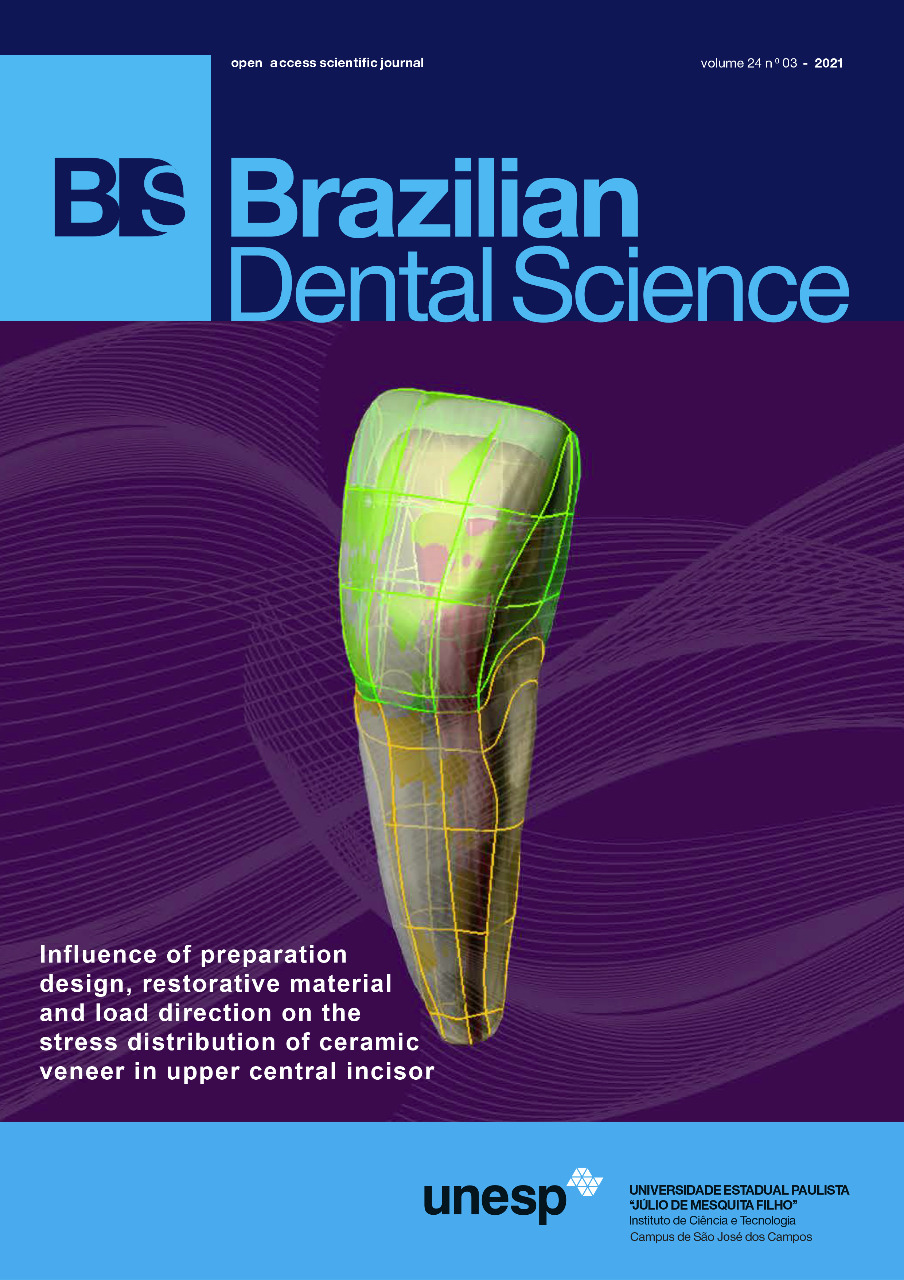A one-year clinical evaluation of IPS E.max press versus CERASMART endocrowns in anterior endodontically treated teeth: a randomised clinical
DOI:
https://doi.org/10.14295/bds.2021.v24i3.2414Resumo
Objective: the purpose of this study was to evaluate and compare, gross fracture, patient satisfaction, and marginal adaptation of anterior endocrowns restoring endodontically treated anterior teeth fabricated from IPS e.max press and CERASMART hybrid ceramics. Material and methods: A total of 24 patients were selected to receive an esthetic endocrowns for upper teeth in the esthetic zone (central incisor, lateral and canine).The 24 patients were divided into 2 groups (n=12 each), where Group (1): Control group: Teeth receiving IPS e.max press anterior endocrowns and Group (2): Intervention group: Tooth receiving CERASMART anterior endocrowns . After cementation all patients were recalled after 3, 6, 9, and 12 months. During each recall examination, USPHS criteria were adopted for clinical evaluation to score margin integrity and gross fracture. In addition, questionnaires were used to evaluate patients’ satisfaction and potential postoperative discomfort. Chi-square or Fisher’s Exact test were used to compare between qualitative variables in the two groups. Friedman’s test was used to study the changes by time within each group. The significance level was set at P ? 0.05. Results: Regarding gross fracture and marginal integrity, there was no statistically significant difference at any time interval between IPS e.max press and CERASMART endocrowns. All the patients were satisfied with their restorations till the end of the follow up period. Conclusions: CERASMART anterior endocrowns provided a promising treatment modality compared to ips press anterior endocrowns.
Downloads
Downloads
Publicado
Versões
- 2021-07-01 (4)
- 2021-07-01 (3)
Como Citar
Edição
Seção
Licença
TRANSFERÊNCIA DE DIREITOS AUTORAIS E DECLARAÇÃO DE RESPONSABILIDADE
Toda a propriedade de direitos autorais do artigo "____________________________________________________________________" é transferido do autor(es) para a CIÊNCIA ODONTOLÓGICA BRASILEIRA, no caso do trabalho ser publicado. O artigo não foi publicado em outro lugar e não foi submetido simultaneamente para publicação em outra revista.
Vimos por meio deste, atestar que trabalho é original e não apresenta dados manipulados, fraude ou plágio. Fizemos contribuição científica significativa para o estudo e estamos cientes dos dados apresentados e de acordo com a versão final do artigo. Assumimos total responsabilidade pelos aspectos éticos do estudo.
Este texto deve ser impresso e assinado por todos os autores. A versão digitalizada deverá ser apresentada como arquivo suplementar durante o processo de submissão.




























